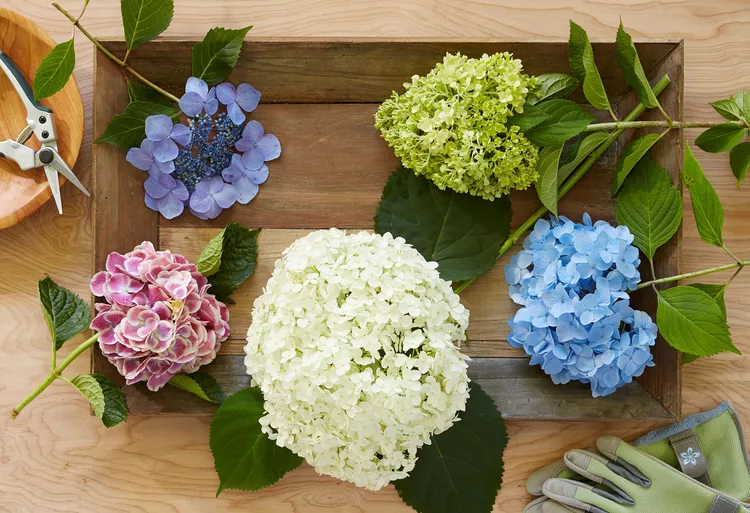How to Prune Hydrangeas for a Burst of Growth and Color

Nothing looks more eye-catching in a summer garden than a hydrangea’s large, beautiful flower heads. Knowing when and how to prune hydrangeas ensures you’ll get the best floral show from these shrubs. However, pruning can seem confusing because no single method applies to all the different types of hydrangeas. For example, when you might prune a ‘Snowball’ hydrangea differs from when you should cut back an ‘Endless Summer’ hydrangea. If you prune them at the wrong time, you could risk cutting off all the flower buds and ending up with no blooms that year. Here’s what you need to know about how to prune hydrangeas for the best results.
How to Prune Hydrangeas
In addition to encouraging hydrangeas to produce more flowers, pruning these shrubs each year helps keep them healthy if they are damaged by weather and allows you to shape them however you like. To figure out how to prune hydrangeas at the best time, start by identifying the type of hydrangea that you have. The most popular varieties of hydrangeas are usually one of two types: bigleaf (Hydrangea macrophylla) or panicle (Hydrangea paniculata).
Bigleaf Hydrangeas
The popular bigleaf hydrangea is distinguished by its changing flower colors. When planted in acidic soil, its flowers are blue. In alkaline soil, its flowers are pink. Because this plant blooms on the previous season’s growth (often referred to as old wood), they either won’t flower or will flower sporadically if you prune them in spring.
For optimal blooms, this green-stemmed hydrangea should be pruned soon after the flowers have faded in late summer. Then, the shrub will have a chance to produce new growth where next year’s flower buds will form. Oakleaf hydrangeas also bloom on old wood and should be pruned in summer after the flowers fade.
When trimming back stems, make your cuts just above a set of leaves with sharp, clean pruners. For best results, use rubbing alcohol, heat, bleach, or hydrogen peroxide to clean your pruners. Cleaning the pruners keeps your plants healthy. Never use baking soda to clean gardening tools; it can disrupt the soil.
Some newer varieties of bigleaf hydrangea, including the popular ‘Endless Summer’, have been bred to bloom on new wood as well as old wood, making them a better choice for colder climates because even if the old stems suffer winter damage, new growth will still bloom. This also provides more flexibility in pruning since you can prune it at any time of the year, and it should still bloom. Even so, pruning right after bloom maximizes future flowering.
Panicle Hydrangeas
Panicle hydrangeas, which include popular varieties such as ‘Limelight’), and smooth hydrangeas (Hydrangea arborescens), best known for the variety ‘Annabelle’) bloom on new wood, meaning that same year’s growth. Shrubs that flower on new wood generally start blossoming later than old wood bloomers. When to prune these woody-stemmed hydrangeas is not as critical as bigleaf varieties, as long as you avoid pruning when the flower buds are opening.
When pruning hydrangeas in general, it’s best to remove no more than one-third of the plant at any one time when they are actively growing.
Your objective determines how you prune panicle hydrangeas. If you are only doing some shaping of plants that are too tall, you can sheer off the ends of each branch. If you need to do a severe pruning to rejuvenate a spindly shrub, you can cut all the branches back to about a foot above the ground in late winter or early spring when it’s still dormant. This pruning method will cause the plant to produce lots of fresh new growth, and you’ll still see flowers later that same year.